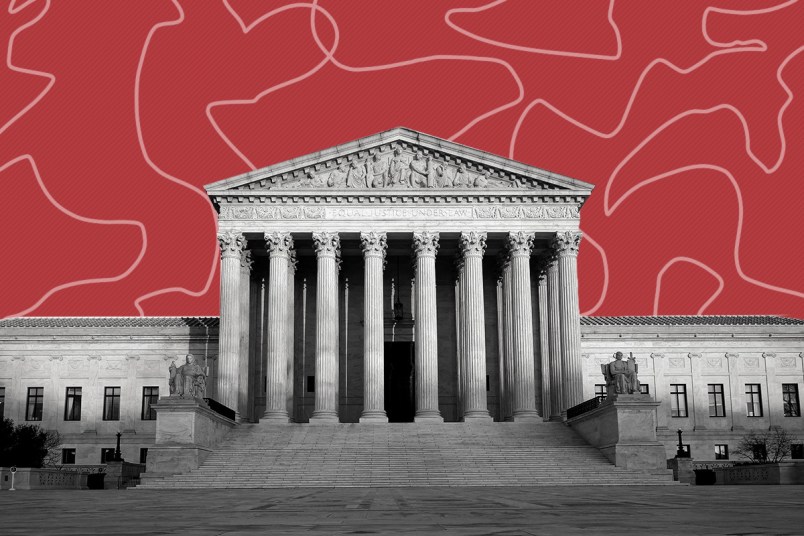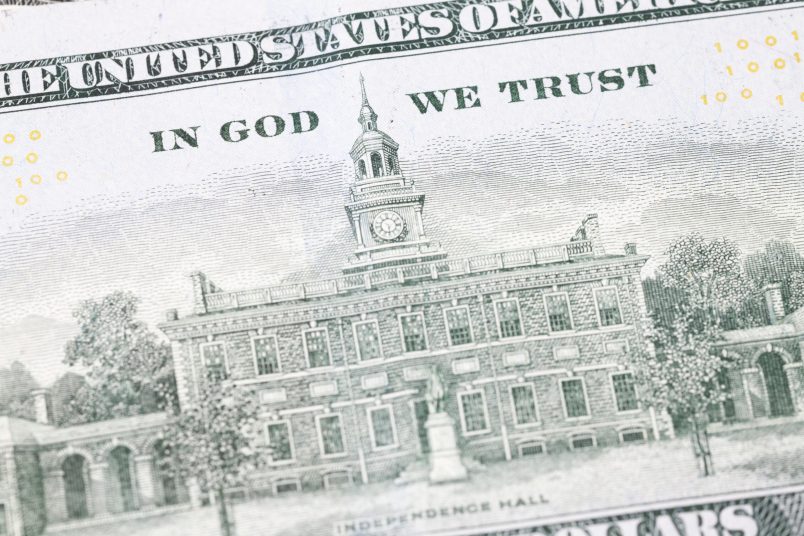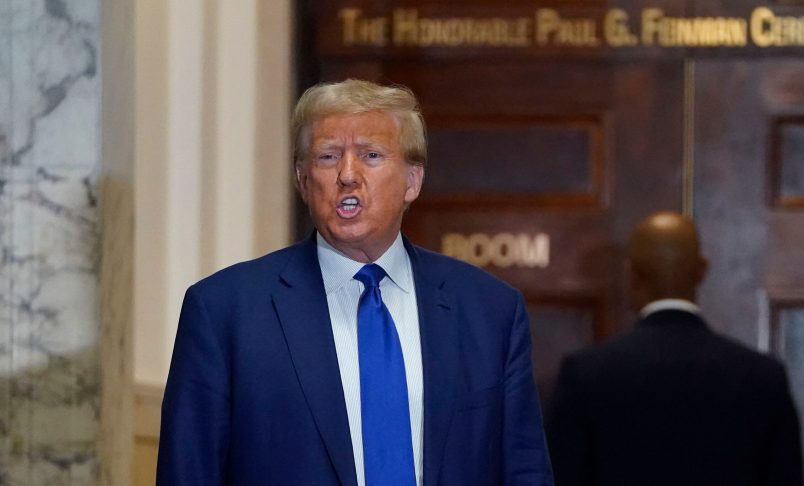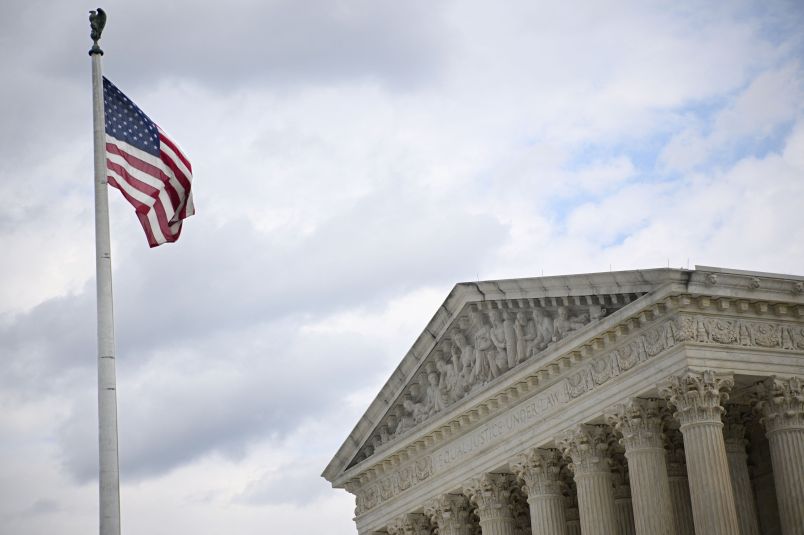This article is part of TPM Cafe, TPM’s home for opinion and news analysis.
The Supreme Court just concluded its 2022 term, with important and sometimes surprising decisions. Although the next term is three months away, key cases are already on the docket that could rewrite major areas of the law. One of the largest could be a case in which the Court will decide whether to overrule the “Chevron doctrine,” an idea that is foundational to decades of Supreme Court rulings about how executive agencies can act. In short, it allows agencies — such as the Environmental Protection Agency, Department of Labor, and Department of Education — some leeway to interpret what Congress meant when they implement legislation. In practice, it helps lawmakers write laws without being expert in all things: Laws can have some vagaries, which are then sorted out by the subject-area experts who staff each agency as they decide how legislation will be put into practice.
In May, the Court announced that it would review a case dealing with how the Department of Commerce regulates fishing, Loper Bright Enterprises v. Raimondo. But the Court said it will not address the dispute at hand — it will not assess what powers Congress gave the Commerce Department to regulate in this area. It will instead simply consider changing or tossing out Chevron.
The prospect that Chevron could be revisited has drawn nationwide attention, framing the case as imposing a new constraint on federal regulatory agencies. Even if the Court does not scrap Chevron entirely, a significant weakening of the precedent will be an engine of considerable uncertainty.
First some history. Despite the name, what is being contemplated is not an overruling of a case named Chevron. Chevron, the case, is not a monument of administrative power or a ratchet for greater regulation. The case itself, from 1984, was between the oil company Chevron and the Natural Resources Defense Council, and Chevron won. The question was whether, for counting emissions for certain purposes under the Clean Air Act, you should treat an individual piece of equipment, such as a turbine power generator or a refinery unit, separately, or aggregate all the equipment at an overall facility (such as a power plant or a refinery). Under President Carter, the EPA had chosen the former; the Reagan-era EPA changed its policy to use the latter. For complicated reasons, the “aggregate” measure is less restrictive; so Chevron defended that approach when the NRDC challenged it as contrary to the Clean Air Act. The Supreme Court — unanimously — concluded that there was really no way to tell which version Congress intended, and given that total ambiguity the agency was best placed to make the choice.
The original justification for Chevron was, as presented, fairly straightforward. (Volumes of legal scholarship, and the expanding judicial elaborations, have made things more complicated in the decades since.) Suppose Congress wrote a law that said: “The Clean Air Act emissions controls will apply either separately to each unit at a facility or to the facility in the aggregate; and the EPA is authorized to decide (and change its decision) which way it will be.” Presumably Congress could do that. In Chevron, the law was not that specific; but Congress doesn’t have to use special words to communicate its intentions, the Court found, and some of the content of a statute can be implicit rather than explicit. So in Chevron the Court concluded that when Congress wrote a statute that truly could mean either “each unit” or “aggregate,” and empowered the EPA to implement the statute, it was implicitly doing the same as if it had explicitly said “the EPA is authorized to decide which way it will be.”
Today, the Supreme Court is not deciding whether to overrule a case about aggregate stationary sources under the Clean Air Act, and it is probably not even deciding whether to overrule the approach that Chevron itself used. What is actually at stake is a general idea about the leeway afforded to executive branch agencies, often, now, called Chevron, a term that has come to include a collection of extensions and elaborations that have grown up over the years. One of the most important was a decision, written by Justice Scalia, that held an agency gets the same kind of deference when it is interpreting the scope of its own authority. Another extension was an opinion by Chief Justice Roberts that declared “Chevron deference” must be monolithic, applied in equal measures across agencies, for the sake of “maintaining a uniform approach.” Decisions like these go far afield from the original justification. But the original justification has been overgrown by years of creep, facilitated sometimes by a rigid adherence to the “Chevron” idea without returning back to why the idea arose in the first place.
The case that the Supreme Court has taken up next term is certainly debatable. An agency is requiring fishing boat operators to have law enforcement monitors onboard (to check that they are not violating catch limits), and if governmental monitors are not available, to pay for their own third-party monitors. An appellate court (the D.C. Circuit) concluded that the relevant law did not clearly prohibit the agency from doing that, so under the “Chevron” idea the court deferred to the agency’s interpretation that it has that authority. It would be understandable if the Supreme Court wanted to give that issue a second look. But, again, the Court has said it will not review the substance of the case. It will solely take up the question of whether it should overrule Chevron.
Some have complained that Chevron is a thumb on the scale in favor of more regulation or less. Recall, though, that Chevron, the oil company, won the case. EPA had decided to use its authority in a way that Chevron found more business-friendly, and the Court said that was acceptable. If the consequences of Chevron are currently pro-regulatory, that is mainly a feature of the current environment, in which there has been a Democratic President for 18 of the last 30 years, so that, in broad strokes, over that time federal agencies have on balance tended to exercise their discretion in favor of more regulation. But in the long run, the idea that an agency can choose among possible readings of an ambiguous statute is fairly regulation-neutral.
Among the justices themselves, some have made statements indicating a concern that in deferring to agencies, courts are abrogating their own power. Those statements have framed the issue as a separation of powers concern under the Constitution, namely that once a law is passed, only a court has the authority to say conclusively what the law means. For the original idea used in Chevron, that seems a bit too simple. If Congress can write a law instructing EPA to choose A or B, why can’t it write a law that expresses no preference between A or B and implicitly leaves EPA the choice?
More practically, if the Court erases the original idea used in Chevron, it will be significantly increasing the risk of uncertainty in the U.S. legal system.
Unlike many countries, the United States does not have courts that can opine on the meaning of statutes in advance. The federal courts do not provide what they call “advisory opinions”; instead, they hear concrete disputes. A person wanting to know what a statute means cannot simply ask a court to decide. Moreover, we have 12 regional appeals courts, which can (and sometimes do) reach different conclusions about legal issues. For the Supreme Court to resolve those splits can take decades.
And meanwhile, laws are often unclear. Those ambiguities are unavoidable, because Congress cannot contemplate every possible eventuality when it writes a law; and even if it could, language is imperfect. When a law could legitimately have two (or more) meanings for a given issue, like “single unit” or “aggregate across the facility” in Chevron, everyone engaged with the law wants to know which it will be. To get an answer from the courts will often require years and years of expensive litigation — and the accompanying uncertainty. Chevron reduces that uncertainty. One body — the administrative agency assigned to that law — can provide the interpretation that everyone needs. The answer can come on a nationwide basis, and it can come before anybody has invested substantial amounts in the “wrong” answer. That authority has never been absolute; the courts can (and sometimes do) decide that an agency’s interpretation is out of bounds. But as a practical matter, the Chevron rule has meant that once an agency provides its interpretation, the public can be fairly confident that interpretation will stick.
A world with no Chevron means that on every interpretive question about a regulatory statute, every uncertainty or ambiguity, no matter how large or small, we must all — businesses, their customers, citizens — live in a climate of uncertainty, not having reliable information about the meaning of the law until years after we need to know. To return to the case of genuine ambiguity behind the original Chevron decision: From the statute itself, there was no way to say whether it should apply at the level of individual units or aggregated facilities. A court could insist on its prerogative to choose one or the other — perhaps by flipping a coin — instead of letting the EPA choose, but only at the cost of forcing the industry to plan and invest for both potential outcomes.
The Supreme Court could, in its new case, simply have pruned back any excesses that have grown over the years. It could even have reversed the decision about fishing monitors while preserving what the original Chevron case said. That the Court has signaled it might, instead, overrule the whole concept could turn out to have significant costs for all of us.






